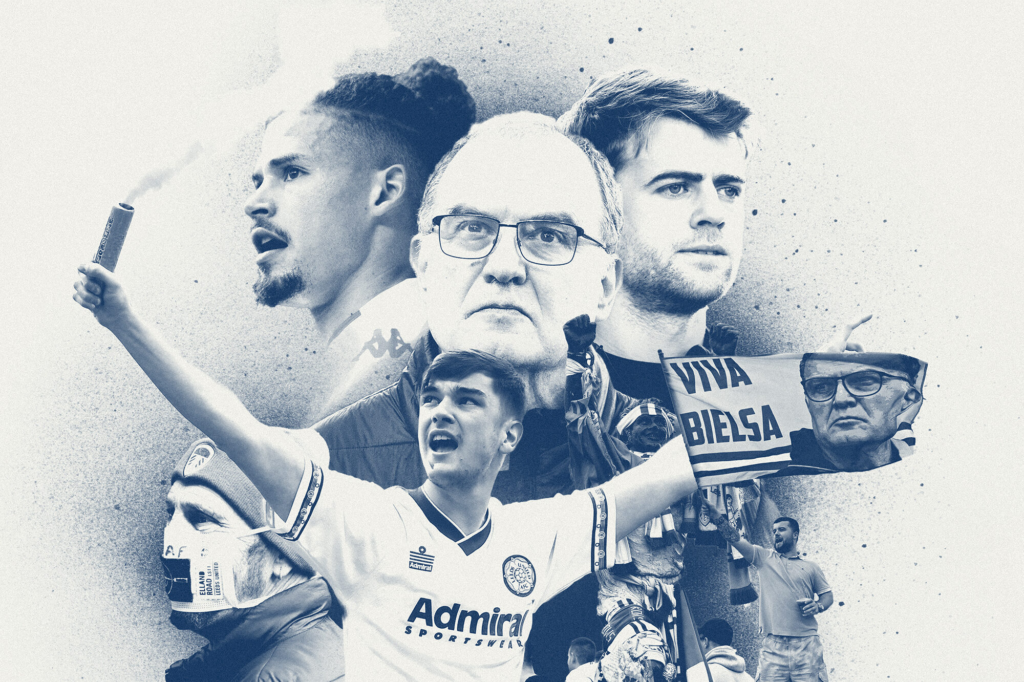Few situations can evoke emotions more than a clash with a rival. This is not just a run-of-the-mill rivalry as far as Leeds United is concerned, it is a battle that stirs players and supporters alike.
Some of these rivalries are so intense that it is paramount to view football culture through the lens of Leeds United football club itself.
Let’s look at who exactly is considered the major nemesis of the club and what every such clash is so eagerly awaited for the whole season.
Introduction to Leeds United and Football Rivalries

Grit and perseverance have become synonymous with the words, Leeds United. The club is more of a football club, as it has a rich history and a dedicated following.
Football revolves around fan and team rivalries that help foster the spirit of the game but also sometimes foster unhealthy practices.
For Leeds, its history is very much shaped by its rivalries which also enhance the desire of the club to win more matches.
There is more than what meets the eye when making a football rivalry. There is history, there is geography and there is competition.
It surges up and rises as one of the most cherished moments in the minds of the numerous fans for decades. It is also significant in focusing on how these conflicts and rivalries evolve within the context of Leeds United.
This blog will cover both sides of the coin, i.e. all the mentions of Leeds United’s most hated rivals and also take you into the timeline of these iconic clashes.
From the old-time incredible scenes to current times, we shall look at the memorable rivalries that render Leeds United’s legacy almost incomplete.
Identifying the Top Rivals

Historical Rivalries and Their Impact
Rivalries often develop over many years, rooted in historical events that leave a lasting imprint on the clubs involved.
For Leeds United, several clubs have emerged as key rivals over the decades. Matches against these rivals are always marked by intense competition and passionate displays, both on and off the pitch.
Notably, Manchester United stands out as one of Leeds United’s fiercest rivals. The rivalry traces back to the 1960s, a period marked by legendary managers Don Revie and Matt Busby.
Their fierce competition on the field only intensified the animosity between the clubs. These encounters were more than just matches, they were battlegrounds where reputations were forged and legacies built.
Another significant rivalry is with Chelsea, fueled by fierce clashes in the 1970s. The battles between these teams are etched in fans’ memories as some of the most intense encounters in the history of English football.
Beyond the on-field tussles, these matches have been defined by fierce crowd support and palpable tension.
Key Matches and Moments
There are certain matches that define the shape of the opposing contests between Leeds United and its foes.
For example, fans of Manchester United are unable to forget the football-through-the-fire aspect of the 1970 semi final of the FA Cup.
It was a confrontation that displayed the competitive nature of the two clubs and exacerbated the rivalry for the following years.
Likewise, encounters with Chelsea in the late 1960s through to the seventies, the most notorious being the 1970 FA Cup tie, also remain particular.
However, photographs of players from these contests show how awe inspiring these players were to the fans and media. These have also played a part as to why the Leeds and Chelsea fan base remain at loggerheads.
More recently, rivalry matches against other clubs such as Sheffield United have acquired a new meaning as promotion chases have added more spice to these encounters.
So with every match that Leeds United plays, it becomes not just an ordinary match but a piece of the vast puzzle depicting the football rivalries of Leeds.
Geographical, Historical, and Competitive Factors
Rivalries typically originate from common factors such as location, historical progression, and competition.
Geographic concern, in particular, carries much weight to Leeds United back in the days when it had a rivalry with Huddersfield Town.
This trophy clashes two clubs that are historically related, further helping in making the games among the choke points.
There are some historical reasons which cause disputes as well. As Leeds United was becoming the main power in English football of the 1960s-1970s, it found itself in direct combat with such clubs willing to take the leading position in English football.
Such confrontations provided a good background for many existing conflicts, which are still of great interest to the supporters.
Just like the aforementioned factors, competitive factors also hold. There are some specific grudges when playing such matches particularly when ranking higher in the league or winning cups.
Everyone is under pressure and the quest to win becomes a burning fire for both the players and the supporters.
Comparing and Contrasting Rivalries

Fan Perspectives and Cultural Significance
Fairness aside, a rivalry involves as much the supporters as it involves the sportsmen. The supporters of Leeds united fill even the least significant rivalry matches with energy.
Engaging in such encounters and other communal activities is insatiable, which offers a very interesting culture.
It is common for fans across the globe to develop some form of animosity with other teams and this continues even after the last whistle.
There are many reasons for such loyalties and such rivalries, including matters of inner self, or social ill. Such occasions promote finding for internal and external solidarity in support of Leeds united.
Most of the time, supporters look at their rivalries in terms of history by trying to remember the accomplishments or natural defeats. Ac claim victory leeds flag in hands sort of attractiveness after.
It is the emotions involved in these rivalries that spell out the distinguishing factor and elicit an exploring passion.
Evolution Over Time
Rivalries are not static they evolve over time, influenced by a multitude of factors. Changes in club fortunes, management, and player personnel can alter the dynamics of a rivalry.
For Leeds United, its return to the Premier League has reignited rivalries that had simmered during its time in lower divisions.
The advent of social media has also transformed how rivalries are perceived. Fans now have a platform to engage, debate, and celebrate their team’s successes and failures.
The digital age has added a new layer to rivalries, allowing for real-time interactions and a global audience.
While historical narratives remain important, modern rivalries are shaped by current events and developments.
The combination of tradition and innovation ensures that rivalries remain relevant and exciting for generations of fans.
Social Media and Fan Engagement
Traditionally, fans enjoyed the feeling of rivalries without the knowledge of the social competition surrounding the club.
Social media such as Twitter, Instagram, Facebook seems to be the way for devoted fans to say something, share a picture or a meme, and find more fans. Specially designed Twitter hashtags may allow fans to join some discussions and strengthen the sense of belonging.
For the Leeds United supporters, social media is their new Elland Road where ‘sticky’ highlights are watched and hot war room discussions take place alongside other ‘bounty’ activities like mocking the rival fans.
The gaining popularity and influence of social media aggravates the rivalries and makes them end up being fought everywhere, even in the greatest parts of the globe.
Social media proved to be an effective means of engaging fans even in the very active phase of social competition between the rivalries of the clubs.
Interesting videos, insider content, and games help establish a bond between the club and football fans.
This activity at Barcelona adds extra spice to the hatred that comes with rivalry matches, making it more fulfilling for supporters.
Conclusion
Rivalries serve as the spine in the passion and drama in the world of football.
Rivalries do not only exist in one city for Leeds United but have also been critical in defining its character, bringing its supporters together, and aiding in the quest to be successful on the pitch.
In this last entry we have sought to contextualize the competition between Leeds United and its fiercest rivals, namely the historical, cultural, and competitive factors involved.
From great clashes to the convergence of different types of fans, some of these match ups are ever fresh and continue to motivate many fans out there.
Rivalries are common components in the sports that all of its aspects can be utilized.
Such relationships are even more powerful as they are not limited to the bounds of the game, uniting the enthusiasts of the game and leaving behind an indelible mark for those that will come after.
For more Interesting Articles, follow us on Facebook or join our brand new WhatsApp Channel for instant updates directly to your phone.
Discover more from Leeds United News
Subscribe to get the latest posts sent to your email.

